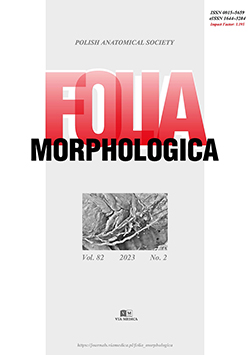 “Memory and GABAergic activity in the hippocampus of stressed rats improve after n-3 polyunsaturated fatty acid (PUFA) supplementation.
“Memory and GABAergic activity in the hippocampus of stressed rats improve after n-3 polyunsaturated fatty acid (PUFA) supplementation.
On the other hand, cannabinoid receptor type 1 (CB1) strongly regulates inhibitory neurotransmission in the hippocampus. Speculation about a possible relation between stress, endocannabinoids, and PUFAs.
Here, we examined whether the effects of PUFAs on memory of chronically stressed rats depends on pharmacological manipulation of CB1 receptors.
Memory improved in the stressed rats that were treated with AM251 and/or n-3 PUFAs. Supplementation with n-6 PUFAs did not affect memory of stressed rats, but co-treatment with AM251 improved it, while co-treatment with WIN55,212-2 did not affect memory.
Our results demonstrate that activity of the CB1 receptors may modulate the effects of PUFAs on memory of stressed rats. This study suggests that endocannabinoids and PUFAs can both become a singular system by being self-regulated in limbic areas, so they control the effects of stress on the brain.”
https://www.ncbi.nlm.nih.gov/pubmed/31637966
https://www.tandfonline.com/doi/abs/10.1080/1028415X.2019.1659561?journalCode=ynns20

 “The high frequency and painful profile of inflammatory oral lesions and the lack of an effective drug protocol for their management stimulate the search for pharmacological alternatives for the treatment of these conditions.
“The high frequency and painful profile of inflammatory oral lesions and the lack of an effective drug protocol for their management stimulate the search for pharmacological alternatives for the treatment of these conditions.  “Although a lot of information can be found on the specific dual role of the endocannabinoid system in the emotional-related responses, little is known whether stimulation or inhibition of the CB receptors may affect the activity of the frequently prescribed antidepressant drugs.
“Although a lot of information can be found on the specific dual role of the endocannabinoid system in the emotional-related responses, little is known whether stimulation or inhibition of the CB receptors may affect the activity of the frequently prescribed antidepressant drugs. “Uremia leads to a number of metabolic and hormonal disorders including defective carbohydrate metabolism.
“Uremia leads to a number of metabolic and hormonal disorders including defective carbohydrate metabolism. “Modulation of
“Modulation of  “The endocannabinoid system (ECS) consists particularly of
“The endocannabinoid system (ECS) consists particularly of 
 “Microglia are the resident, innate immune cells of the central nervous system (CNS) and are critical in managing CNS injuries and infections. Microglia also maintain CNS homeostasis by influencing neuronal development, viability, and function. However, aberrant microglial activity and phenotypes are associated with CNS pathology, including autism spectrum disorder (ASD). Thus, improving our knowledge of microglial regulation could provide insights into the maintenance of CNS homeostasis as well as the prevention and treatment of ASD.
“Microglia are the resident, innate immune cells of the central nervous system (CNS) and are critical in managing CNS injuries and infections. Microglia also maintain CNS homeostasis by influencing neuronal development, viability, and function. However, aberrant microglial activity and phenotypes are associated with CNS pathology, including autism spectrum disorder (ASD). Thus, improving our knowledge of microglial regulation could provide insights into the maintenance of CNS homeostasis as well as the prevention and treatment of ASD.
 “Social anxiety disorder (SAD), or social phobia, is one of the most common types of anxiety disorder, with a lifetime prevalence that can reach 15%.
“Social anxiety disorder (SAD), or social phobia, is one of the most common types of anxiety disorder, with a lifetime prevalence that can reach 15%.